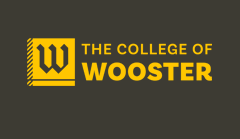Abstract
Prior to European colonization, the tradition of mummifying the head of an elite individual was very prevalent in Māori society. Due to the social rankings of these individuals, their heads would be covered in incised and inked markings called moko. With the introduction of Europeans, namely British colonizers, in Aotearoa New Zealand in the late 18th century, these Toi moko (mummified heads) quickly became a commodified item that left their homeland for foreign collecting institutions. This study looks at how these individuals are being brought back to Aotearoa New Zealand through a repatriation practice that is based on tikanga Māori, the Māori system by which correct protocols are defined. Tikanga Māori has influenced how museums in Aotearoa New Zealand, such as the National Museum of New Zealand Te Papa Tongarewa, go about the repatriation process and how the heads of these repatriated individuals are treated once they make their way back home.
Advisor
Morrow, Kara
Department
Art and Art History
Recommended Citation
Love, Katie, "Te Hokinga Mai: The Role of Indigenous Knowledge Systems in the Repatriation of Human Remains: A Case Study in Toi Moko from Aotearoa New Zealand" (2024). Senior Independent Study Theses. Paper 11086.
https://openworks.wooster.edu/independentstudy/11086
Disciplines
Arts and Humanities | History of Art, Architecture, and Archaeology | Other History of Art, Architecture, and Archaeology | Theory and Criticism
Keywords
Maori, Toi Moko, human remains, moko, tattoo, Aotearoa, New Zealand, repatriation, indigeneity, art history, museum, museum studies
Publication Date
2024
Degree Granted
Bachelor of Arts
Document Type
Senior Independent Study Thesis
© Copyright 2024 Katie Love
